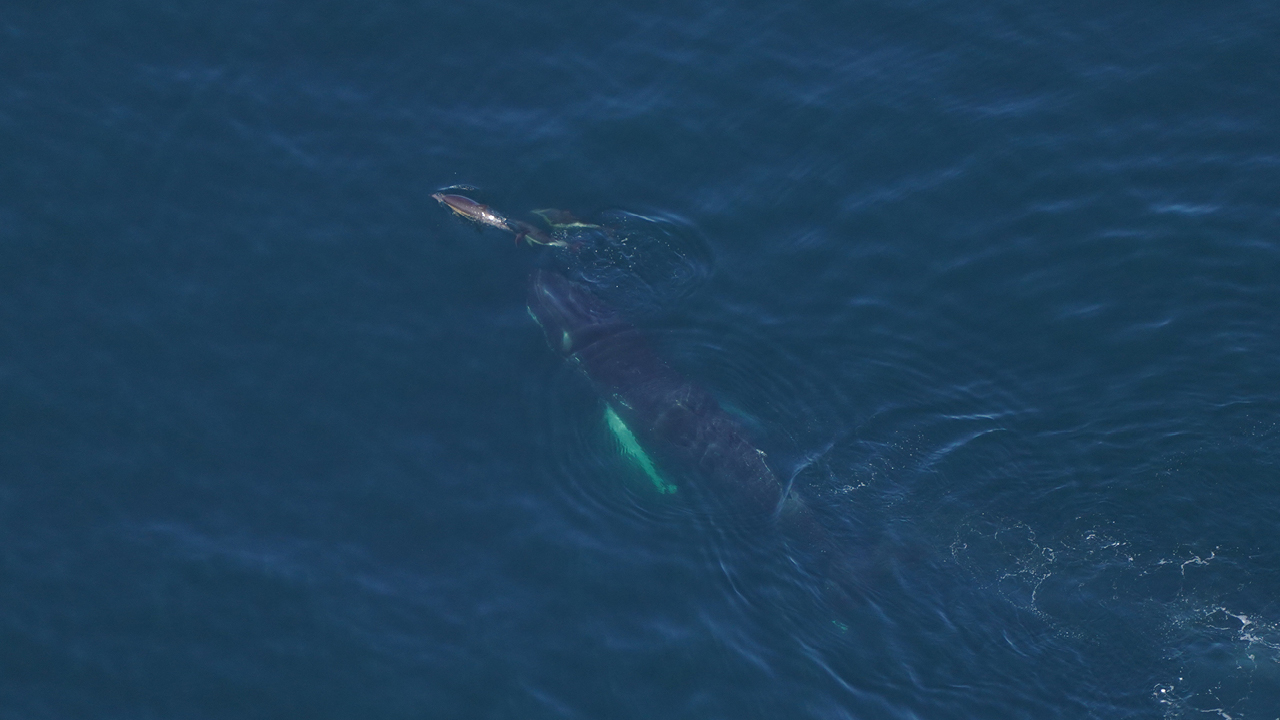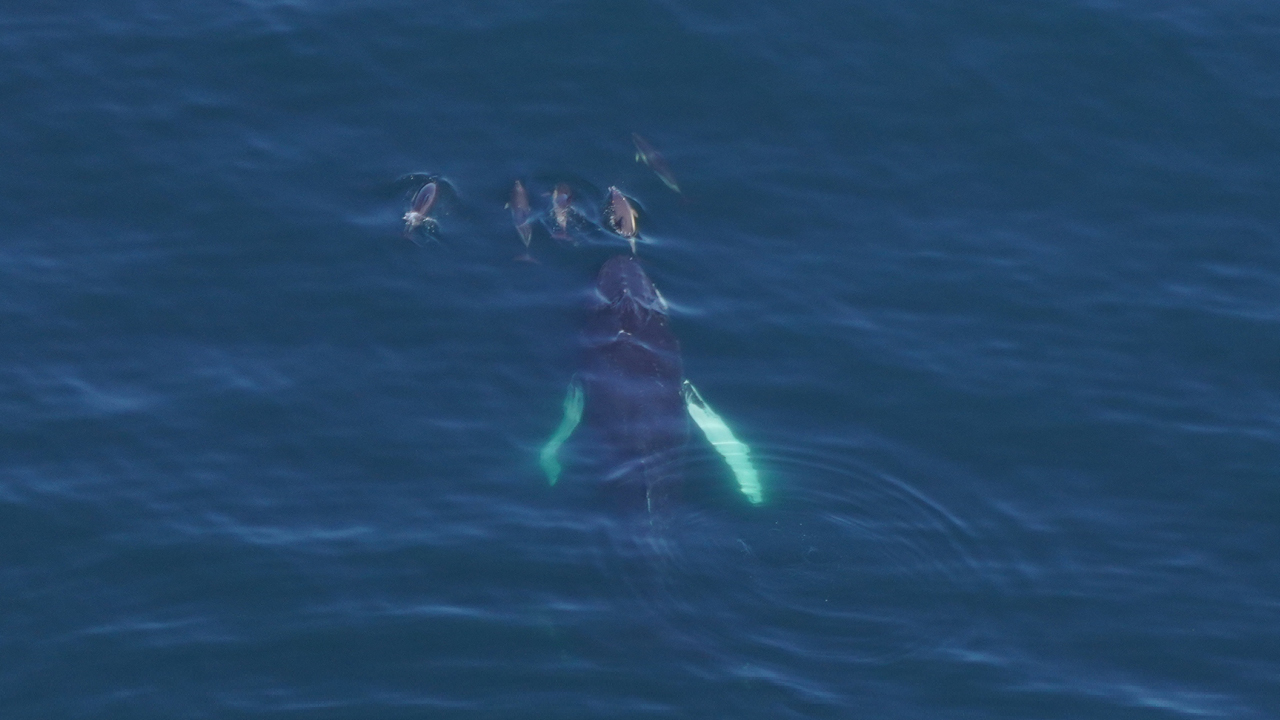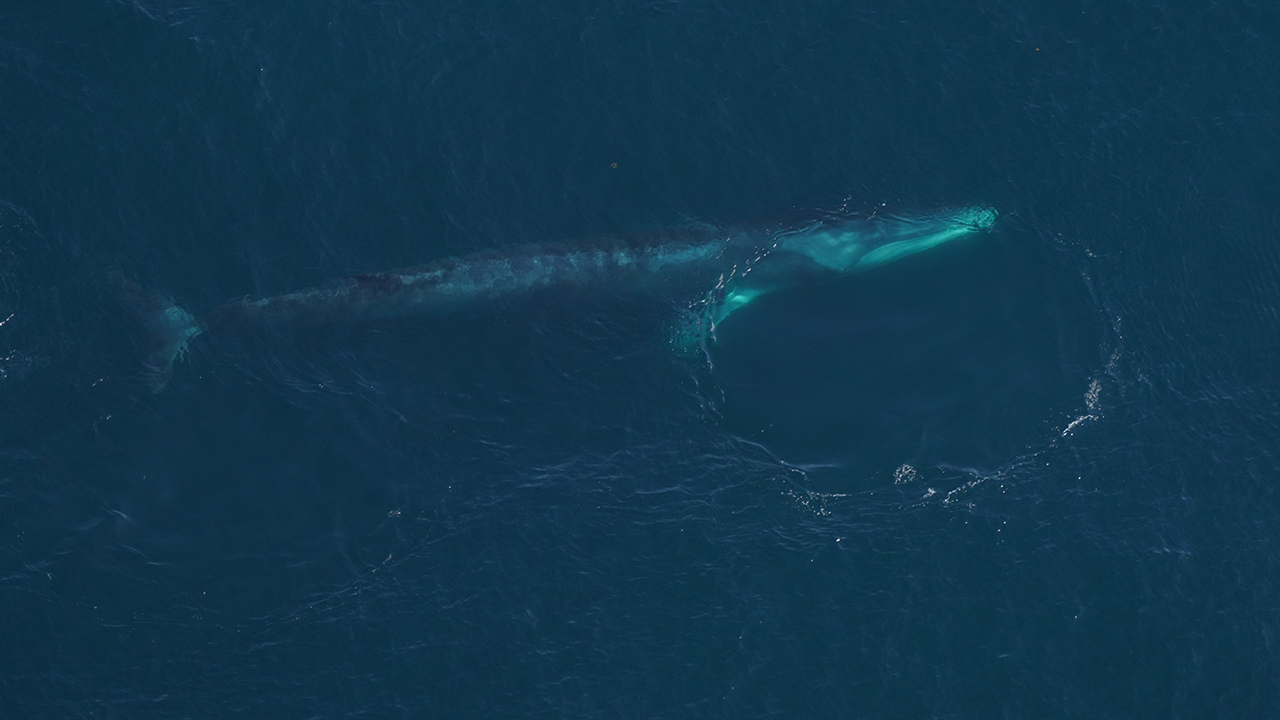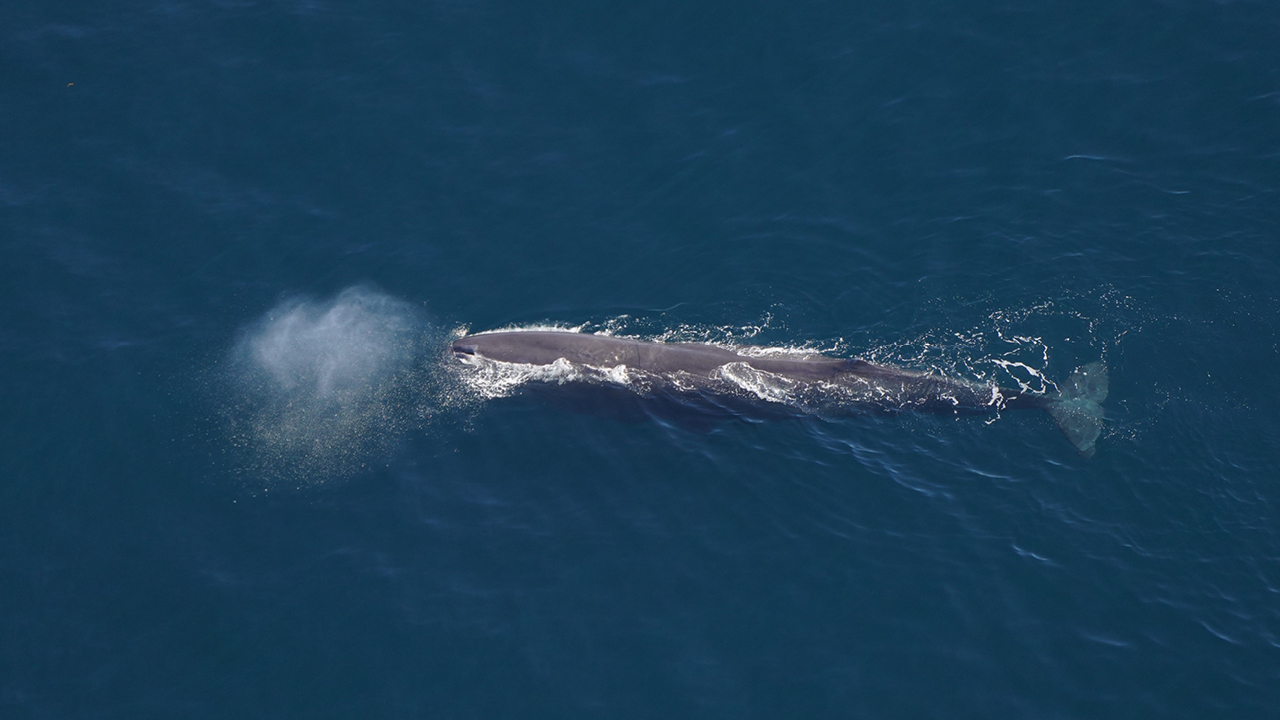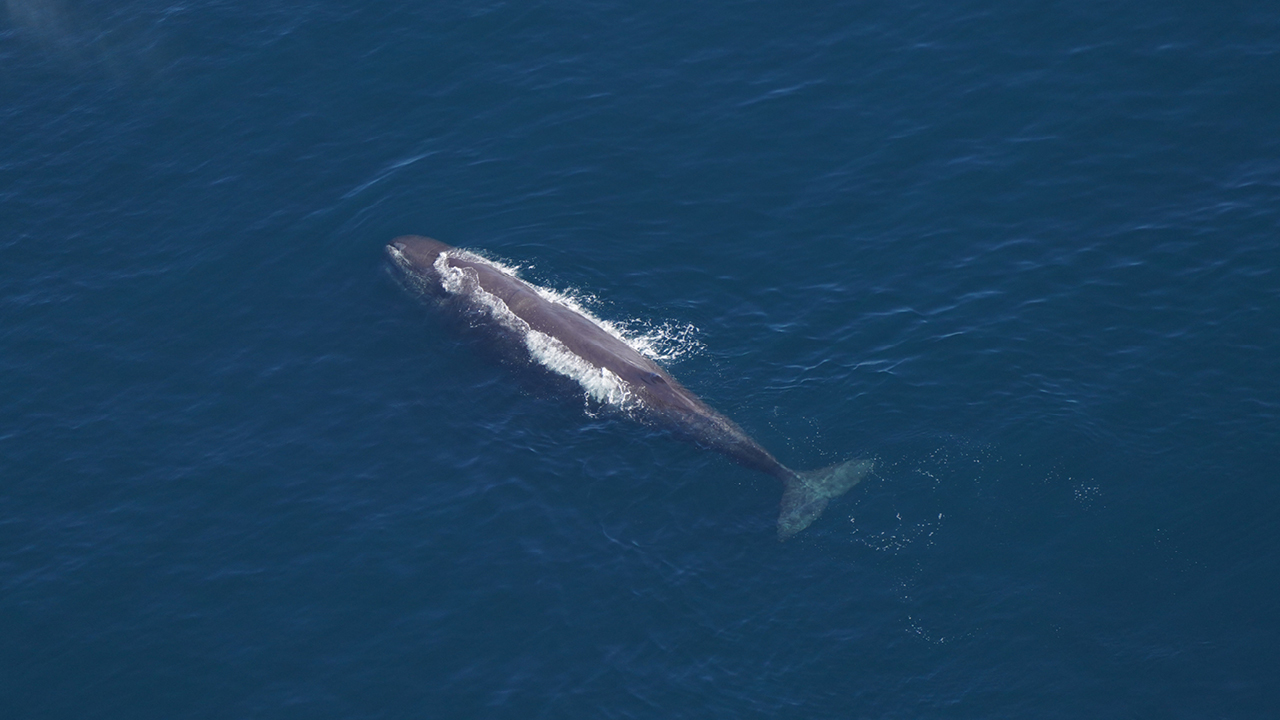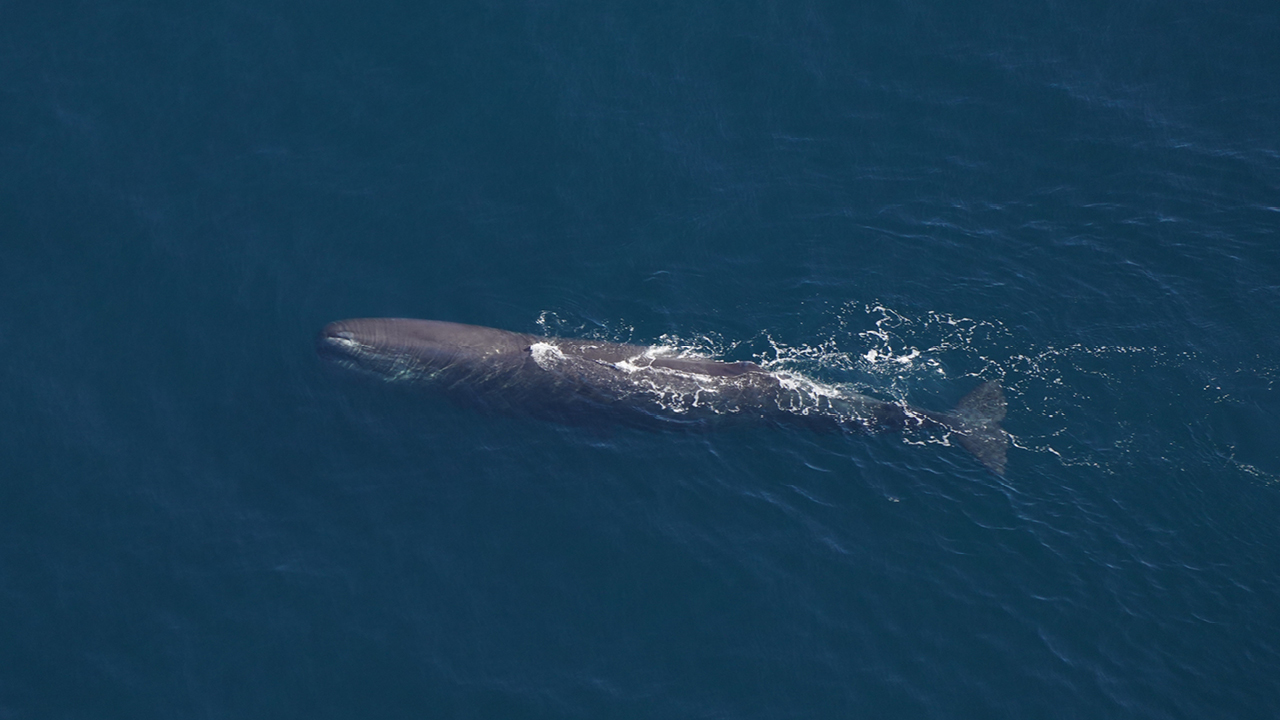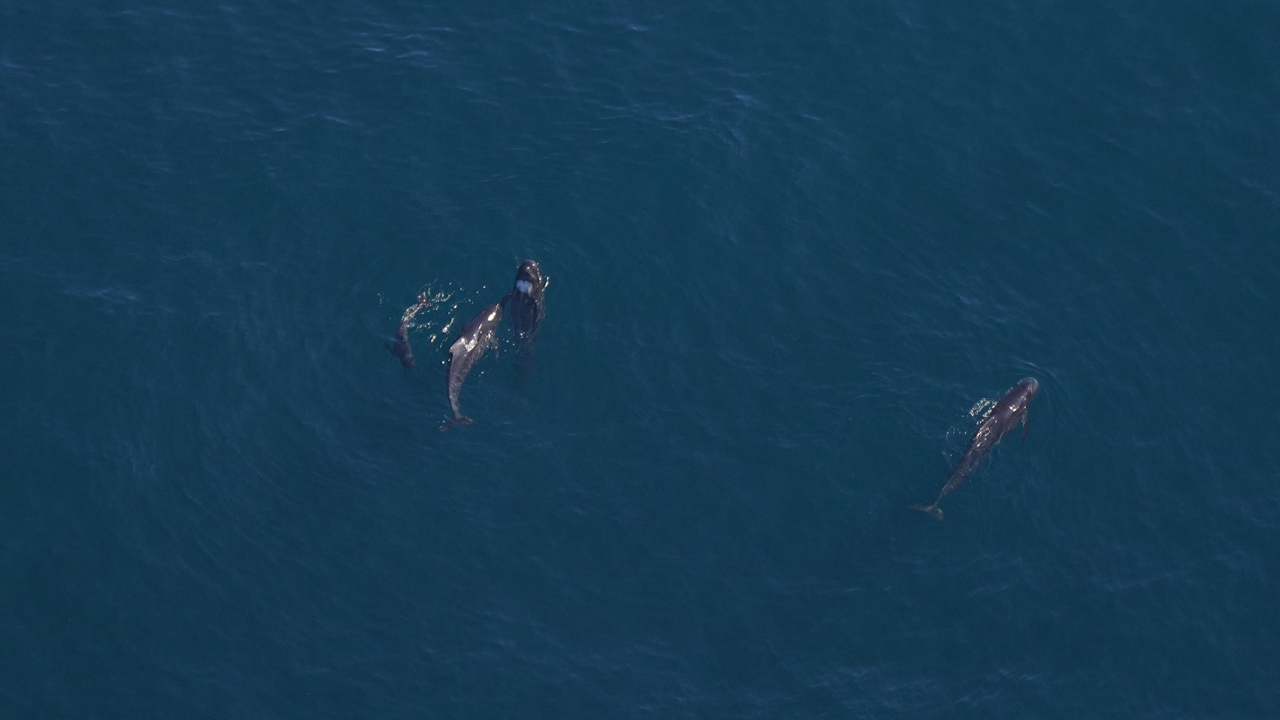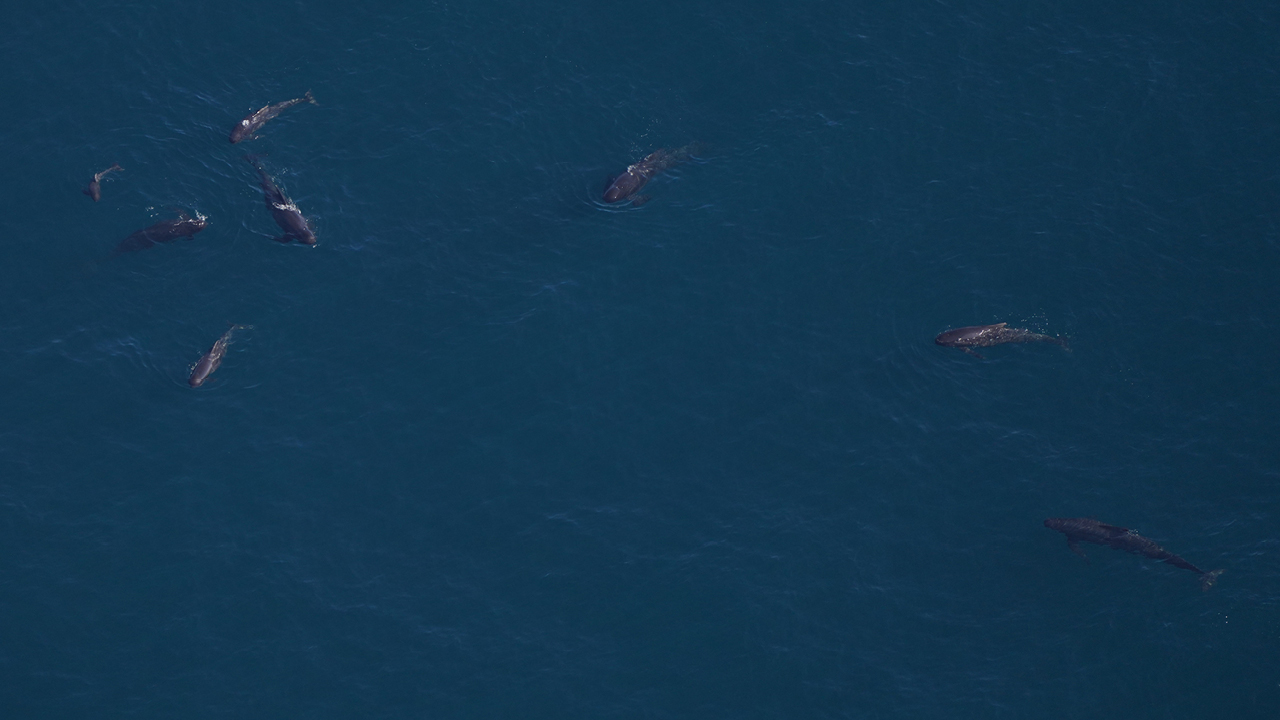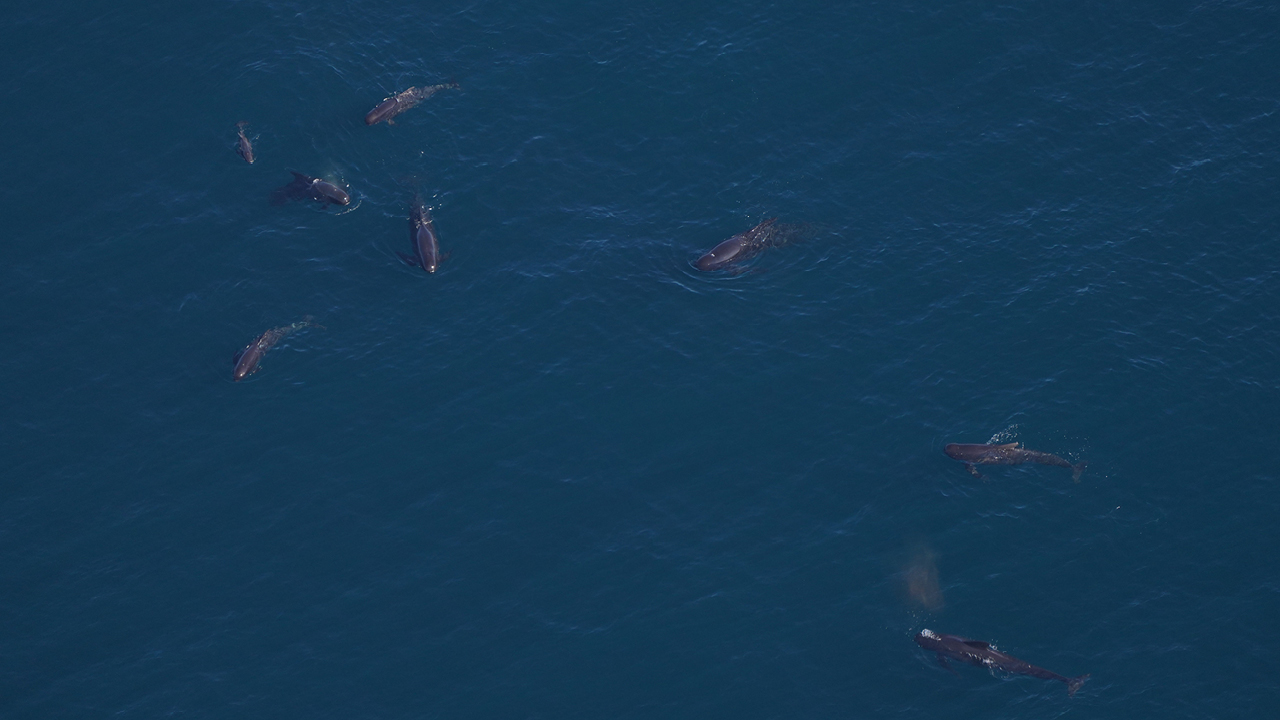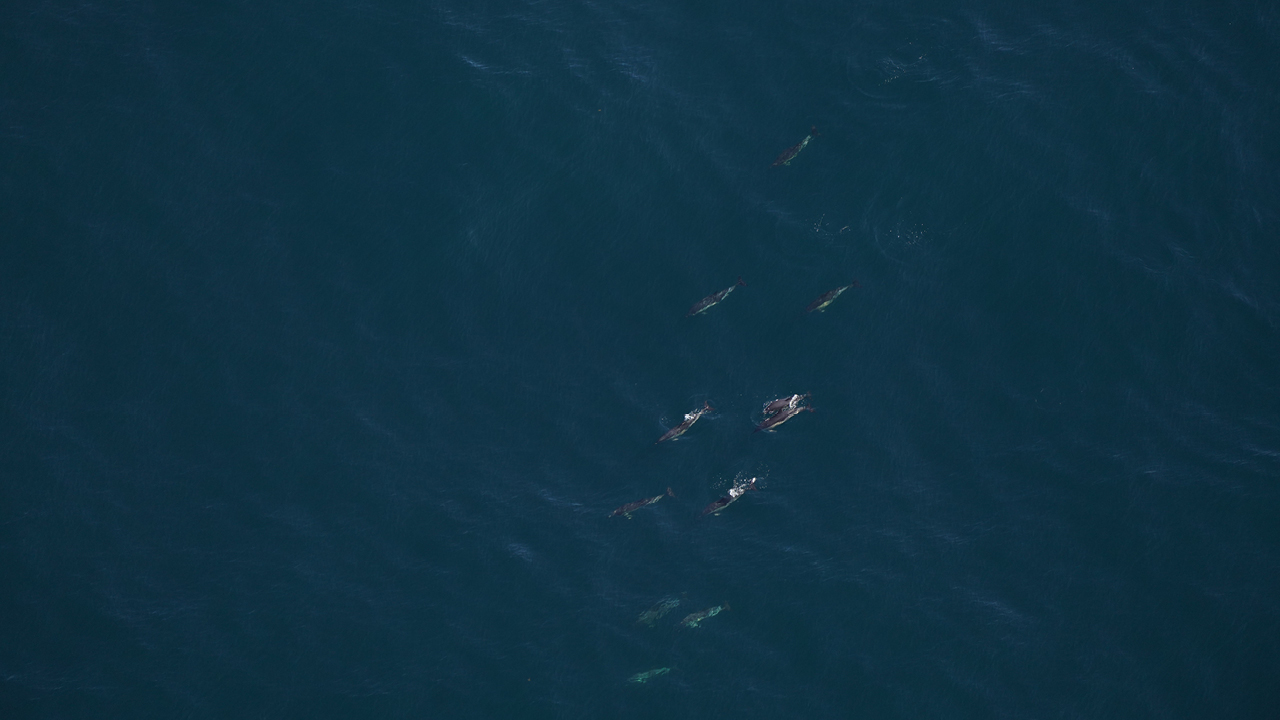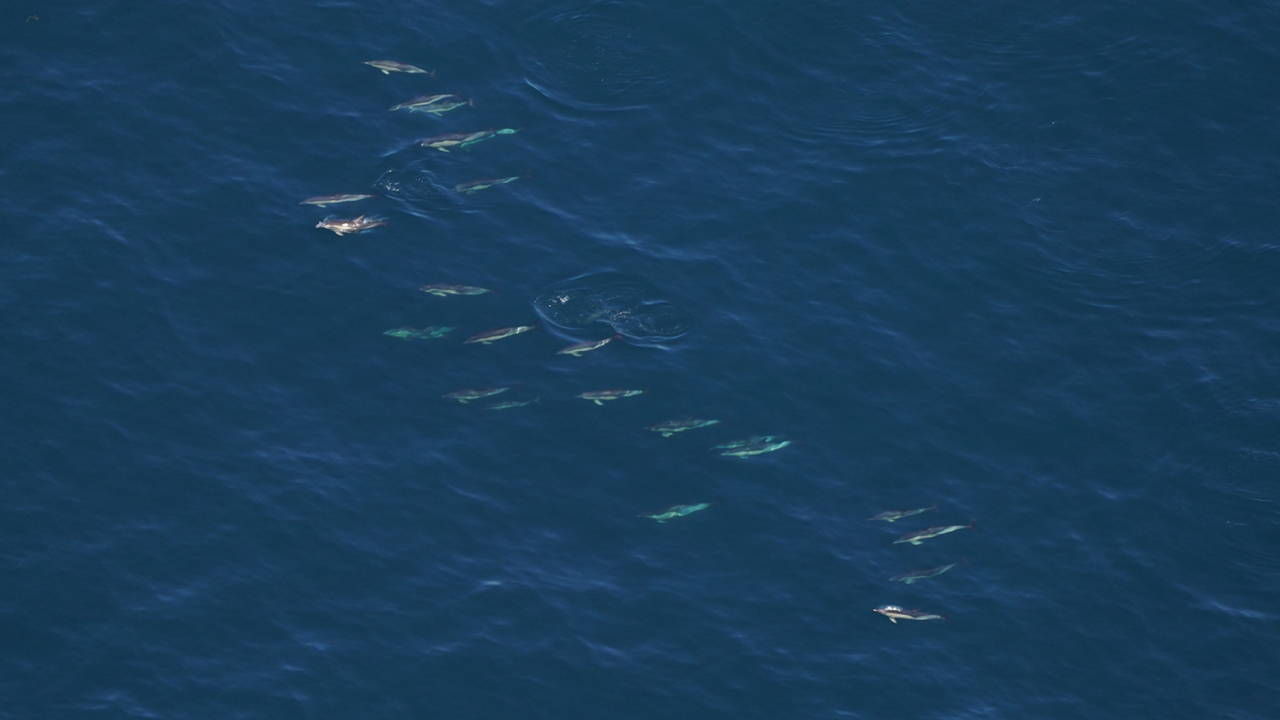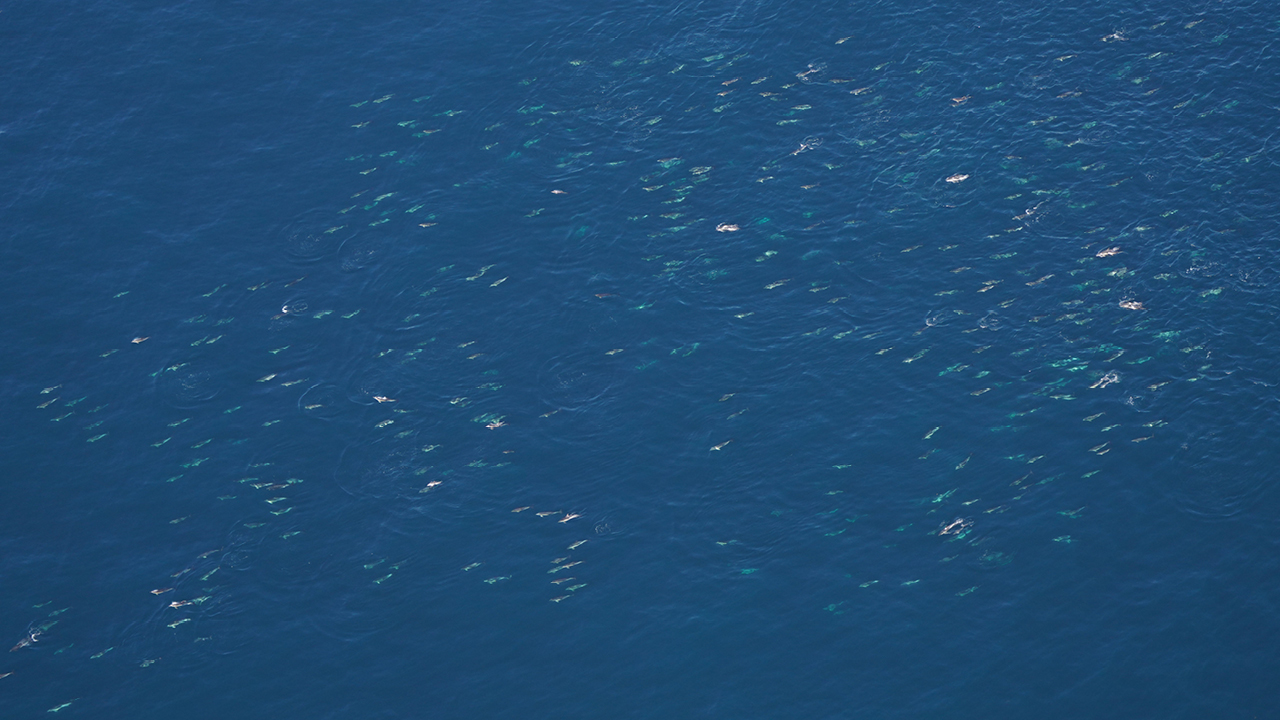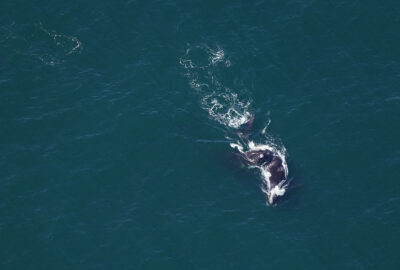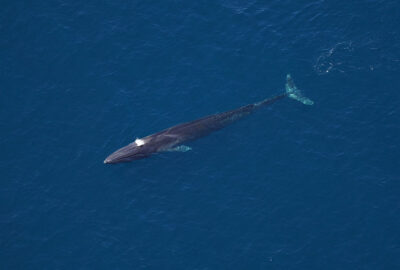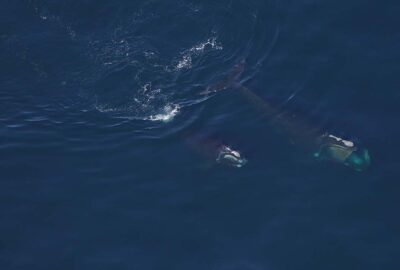Wonders of the Deep
Aerial survey of the Monument finds large variety of whales and dolphins in protected undersea canyons.
By Kate Laemmle on Friday, November 01, 2024

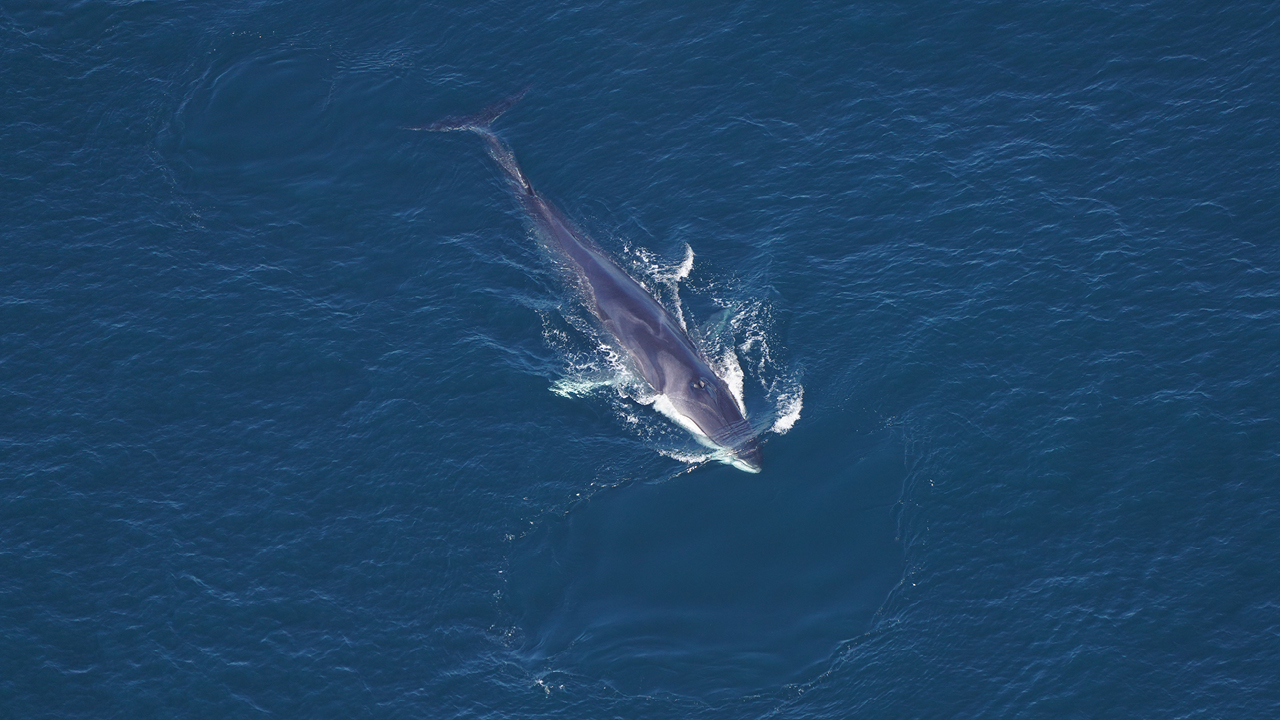
The aerial team at the Anderson Cabot Center for Ocean Life at the New England Aquarium has been flying surveys to the remote Northeast Canyons and Seamounts Marine National Monument since 2017. We travel 150 nautical miles southeast of Cape Cod to conduct these surveys. On a Tuesday in late October, we took a five-and-a-half-hour trip out to the Monument in our aerial survey plane to document whatever marine life we could find!
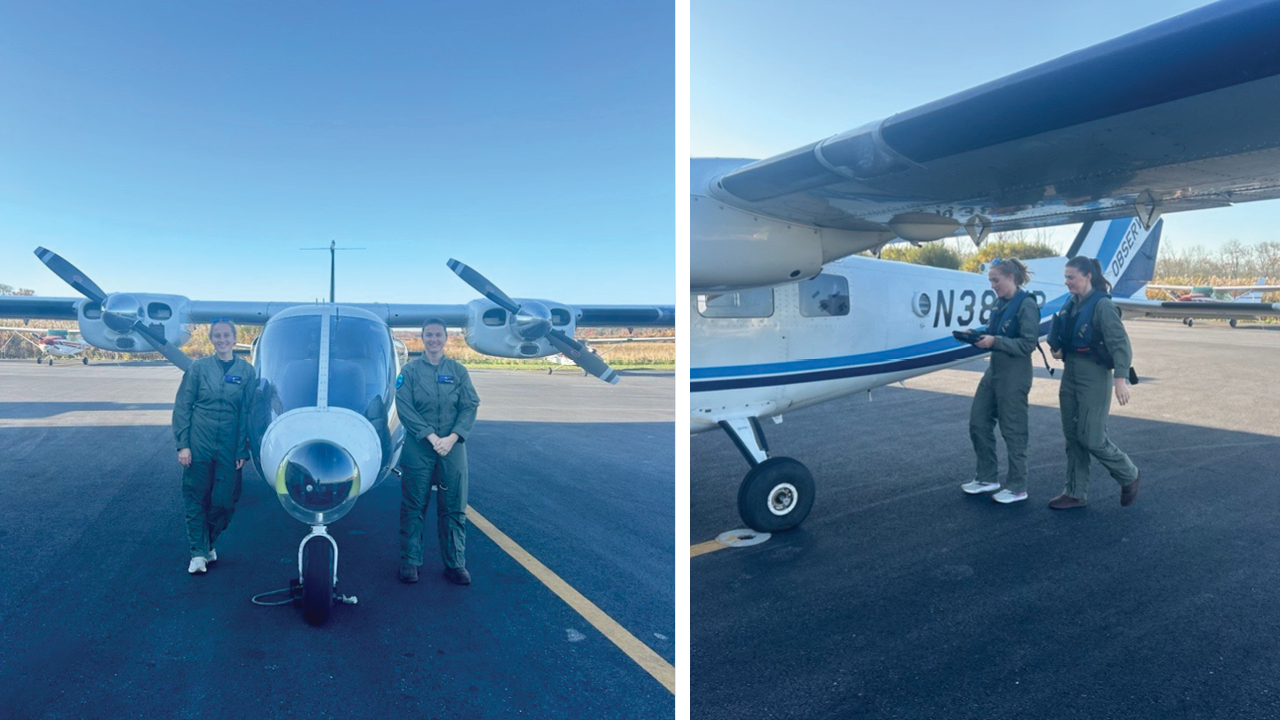
The Monument is a hot spot of biodiversity and home to many marine animals we don’t see close to shore! The Monument covers the edge of the continental shelf, dropping from 200 meters to thousands of meters deep. The steep slopes of the canyons and underwater topography create upwelling, a process that leads to a very ecologically productive area. Our surveys are a special opportunity to showcase the diverse range of marine mammals that use this habitat.
During our short survey, we recorded nine bottlenose dolphins (Tursiops truncatus), 671 common dolphins (Delphinus delphis), 81 Risso’s dolphins (Grampus griseus), 18 pilot whales (Globicephala sp.), two fin whales (Balaenoptera physalus), two humpback whales (Megaptera novaeangliae), and two sperm whales (Physeter macrocephalus). We also saw a variety of fish species including basking sharks (Cetorhinus maximus) and ocean sunfishes (Mola mola)!
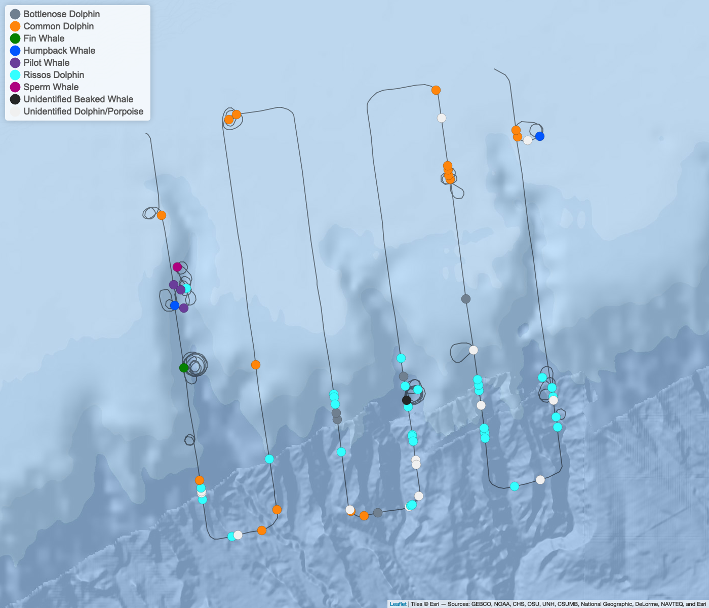
Our survey started off quickly with a group of common dolphins “bow” or “wave-riding” a solitary humpback whale! These common dolphins (six to eight feet in length) were riding in the pressure wave created by the larger humpback whale (which can reach lengths of 45-50 feet). We don’t always know why these inter-species interactions occur, but it could be a way for dolphins to travel at faster speeds while using less energy.
/
Throughout our survey, we spotted many small groups of different species of dolphins. One of the easiest dolphins to distinguish from the air are Risso’s dolphins because they can look almost completely white and stand out against the crisp blue water. Risso’s dolphins become paler throughout their life, partly due to scars they accumulate from competition with each other. They are typically found close to the continental shelf in deeper water, so it’s always a treat to see these species on our Monument flights!
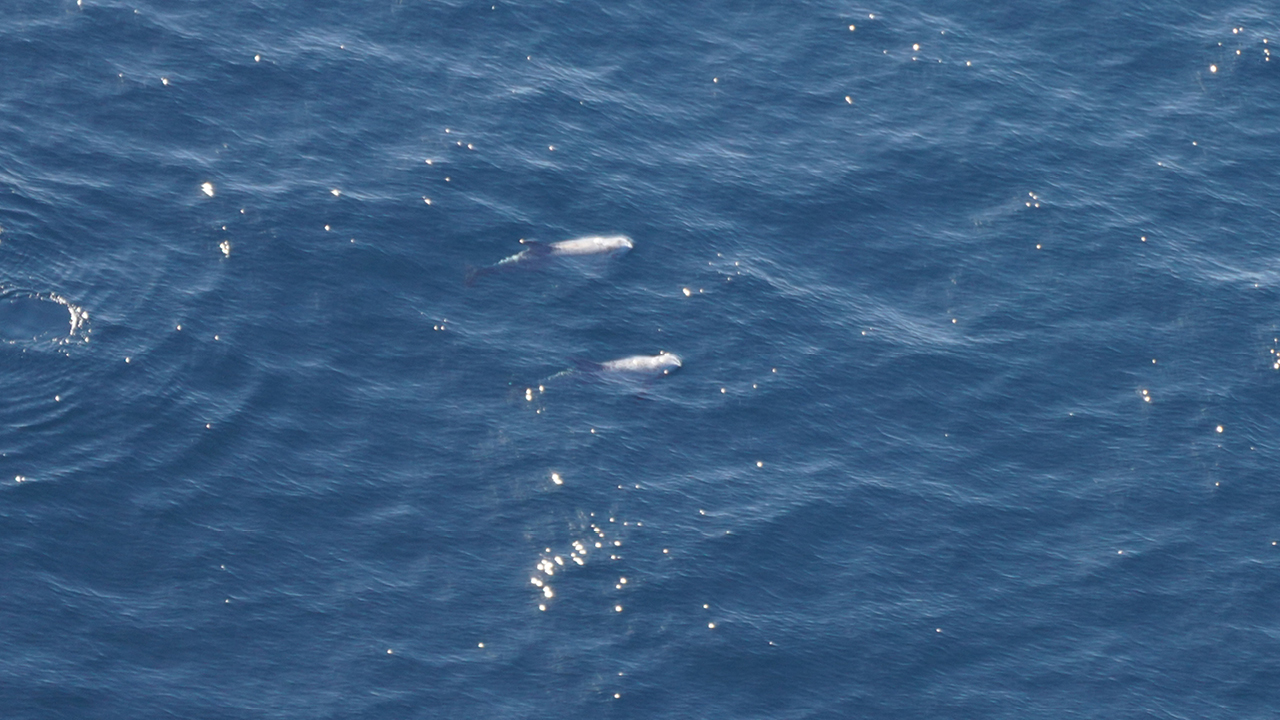
As our survey progressed, we encountered some large, endangered whales including two sperm whales and two fin whales! Fin whales are the second largest whale in the world (second to the blue whale, Balaenoptera musculus), and can grow over 70 feet in length. Fin whales are also one of the fastest whales, sustaining speeds over 20 mph and can reach almost 30 mph in bursts! We were excited to see such a large and fast animal cruise through the water.
/
We also spotted two sperm whales near Oceanographer Canyon, the largest canyon in the Monument. Sperm whales are the largest toothed whales in the ocean and can reach 40-50 feet in length. They can dive as deep as 10,000 feet while hunting for their prey such as squid and fish. The three canyons of the Monument are a perfect place to find such interesting animals.
/
One of our highlights of the day included seeing a small group of pilot whales with a tiny, little calf! Pilot whales are very social animals that form tight-knit pods, and individuals tend to remain with their birth pod throughout their lifetime. Established pilot whale pods are usually made up of several matrilineal lines, and other older females will help care for calves in the group.
/
During the last few minutes of our survey, we wrapped up our trip with a breaching humpback whale and a pod of over 500 common dolphins! The common dolphins were moving quickly through the area while porpoising—a behavior where dolphins periodically leap into the air. We also spotted a few calves in this larger group of dolphins!
/
We know the Northeast Canyons and Seamounts Marine National Monument is a unique habitat where many different species come to feed, but it was also a special experience to see so many calves in the area! Seeing many young calves is a good indication that marine animals come to the Monument not just to feed, but to nurse and care for their young.
This large group of dolphins was a good way to end our survey, and we flew 150 nautical miles back home to process our data and what we’d seen! We hope you enjoyed hearing about our experiences in this special place in the ocean.
Our aerial surveys of the Northeast Canyons and Seamounts Marine National Monument are currently supported by United States Fish and Wildlife Service.

